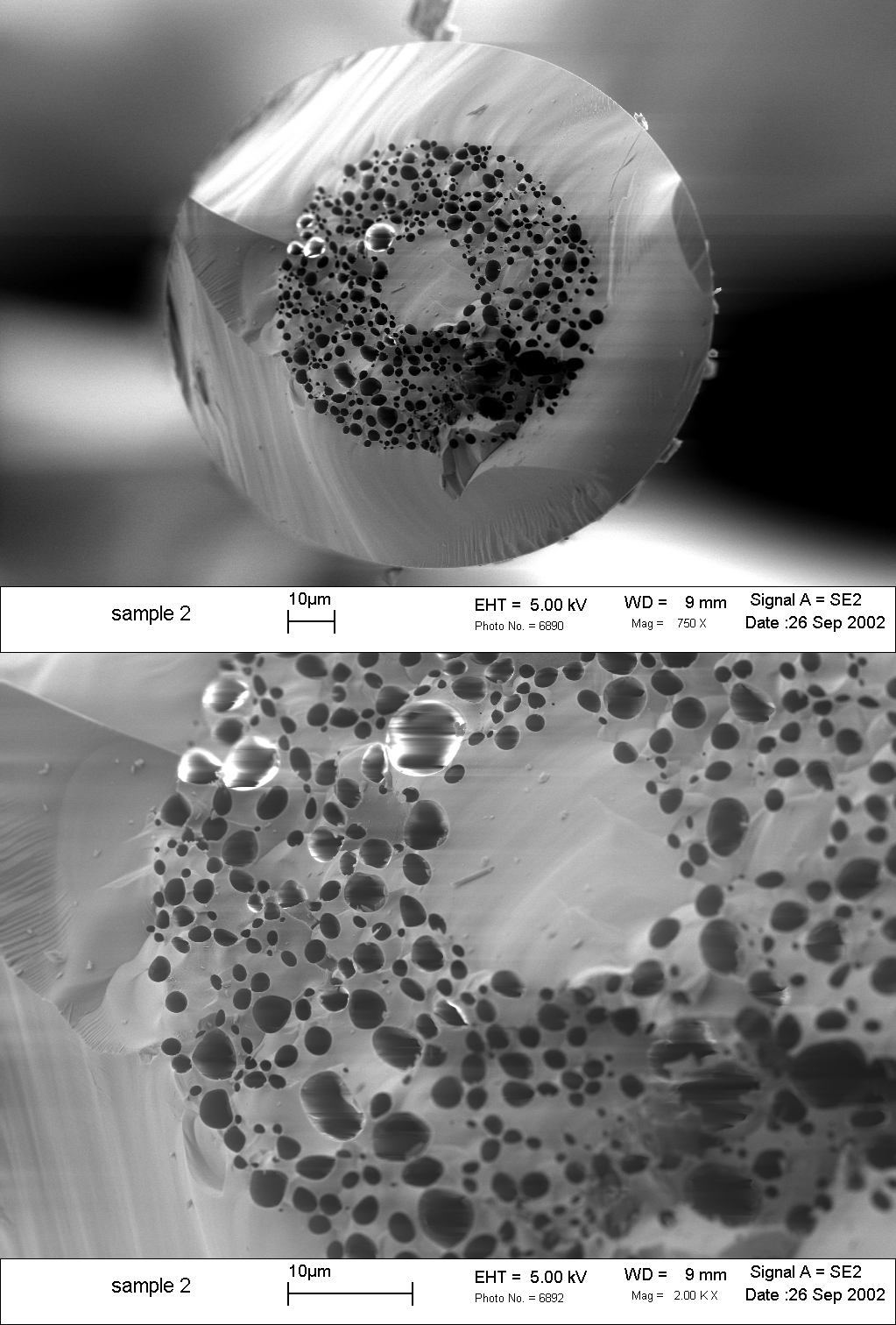Light turning the corner: Holey fiber solves last-mile issues

The nation is connected at almost the speed of light through thousands of miles of fiber streaming mostly underground between cities and out into the country -- delivering information in many formats. But not much fiber is streaming into households. That is because you cannot wind fiber around beams and joists and bend it through walls and floors without losing a significant amount of the optical signal.
Light doesn't like to turn corners -- unless the fiber is full of holes.
Virginia Tech researchers have demonstrated the bend insensitivity of random-hole optical fibers. That is, if the material surrounding the core of the fiber has lots of holes, the light carrying capacity of the center is protected. "It is all one material, silica glass, but the holes confine the light to the center," said Gary Pickrell, a professor of materials science and engineering in Virginia Tech’s College of Engineering.
The research was published in the July 1, 2008, Optics Letters by Pickrell; Cheng Ma, of Beijing, China, a Ph.D. student in electrical and computer engineering; and Anbo Wang, electrical and computer engineering professor and director of the Center for Photonics Technology at Virginia Tech.
Holey fibers are not new. The Optoelectronics Group at the University of Bath introduced the concept in 1996 with ordered holes or tubes. These fibers are known as photonic crystal fibers. Virginia Tech improved the process a few years later. Instead of trying to impose a specific pattern to the small number of ordered holes, the Virginia Tech process allows thousands of holes to be easily formed in the fibers that are of random size, length, and spatial location.
Pickrell's background included both managing glass technology in a large glass manufacturing operation and being technical director for a company that made a large variety of porous materials. At Virginia Tech, he began experimenting with fibers and made the first crude random hole fibers by hand. Having proved the concept that bubbles in the starting glass could be drawn into long thin tubes in the fiber, he went to Electrical and Computer Engineering Professor Roger Stolen, who was in charge of the university's draw tower. Together with Dan Kominsky, of Christiansburg, Va., a Ph.D. student they co-advised in materials science and engineering, they created holey fibers with a number of interesting properties.
The Air Force was interested in the special properties that these fibers could achieve and funded research in 2001, awarding more than $400,000 over the next three years. The results were papers and patents for holey fibers with a number of attributes and applications.
"There are a lot of advantages to random hole fibers," said Pickrell. "You can tailor the optical properties of the fiber, such as the number of modes supported and the dispersion characteristics, by tailoring the physical structure of the fiber."
In addition to low cost fabrication techniques, the random length of the holes could be a significant advantage to fiber-to-the-home applications. If there is a cut in the fiber, water penetrates only a short distance into the fiber, rather than continuing through the length of the fiber as could be the case for ordered hole fibers.
Pickrell has proposed that another potential advantage of the random holey fiber could be reduced optical loss and light scattering if there are also holes in the core material.
Pickrell collaborated with Electrical and Computer Engineering Professor Ahmad Safaai-Jazi and his student, Jeong Kim, of Korea, to model the optical response of holey optical fibers -- not only in communication but for other applications.
It has been shown that these fibers can be used in a variety of sensor applications, an interest of both Pickrell and Wang. The fibers have been demonstrated to be capable of sensing pressure changes, applied load changes, and temperature changes. These fibers have also been used to detect various gas species present in an environment by measuring the wavelength dependent light absorption. Additional applications could be for use in liquid sensors and biomedical sensors.
Work continues to determine what else can be measured and how this technology compares to existing sensing or detecting technology.
"The near-term potential for products based on the Virginia Tech random-hole fiber construction is immense," said Michael Miller, senior licensing manager for Virginia Tech Intellectual Properties Inc., which manages technology transfer for the university. "This fiber will allow high speed data services to be installed in buildings just like copper wire can be – by routing the fiber around studs and using staples, just like phone wire. Imagine not only wiring office buildings, but hundreds of millions of residential users in apartment buildings alone. Plus, the technology is backward compatible with existing optical products, lowering potential adoption barriers."
For more information, contact Miller at (540) 443-9218.
Related Links
- University engineers investigate energy independent monitoring system for bridges
- Researchers invent world's smallest antenna for ultra-wideband communications
- University engineers began the paradigm shift in the manufacturing of power electronics products
- L-Beam Energy Harvester doubles electrical output




